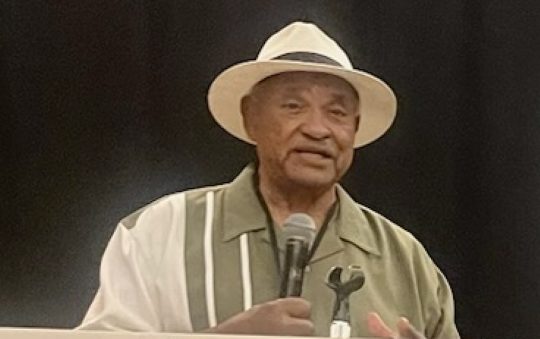
In an era in which many claim America is a post-racial society, it is important to occasionally take an in-depth look at the perennial debate about race, integration and, more recently, diversity.
Many feel that the potential for racial integration in the United States is greater now than ever before. Diversity, multiculturalism, etc. are code words reflecting changing population shifts in the nation’s urban areas. However, the central characteristics of race relations remain a fundamental fear of racial equality that ensures an oppressive status quo for Blacks and other people of color.
The leaders of the desegregation social protest movement of a generation ago mobilized millions with one simple demand, “freedom.” In the context of a racially segregated society of the South in post-World War II, freedom meant elimination of all social, political, legal and economic barriers that forced African Americans into a subordinate status.
Implicit in the demand for desegregation (integration) were several assumptions: Desegregation would increase opportunities for Blacks in business, government and throughout society; desegregated educational institutions would promote greater racial harmony and understanding between people from different races, ethnic groups and communities, which in turn would promote residential integration; affirmative action policies would gradually increase the number of African Americans, Latinos and others of color in administrative and managerial positions.
It was assumed that as African Americans escaped the ghetto, racial tensions and bigotry would decline significantly and as Blacks were more thoroughly integrated into the economic system, the basis for racial confrontation would diminish.
This thesis was fundamentally flawed. First, desegregation did not benefit the Black community uniformly. Black professionals, college graduates and technical schools were the principal beneficiaries. For the unemployed, the poor, for those whose lives were circumscribed by illiteracy, disease and desperation, race continued to occupy an embedded marginal existence.
Legal desegregation contributed to the popular illusion that the basis for racial segregation no longer existed. The abolition of many acially separate residential districts, hotels, schools, etc. convinced many white Americans that the “Negro question” had been resolved and that the passage of anti-discrimination legislation had eliminated all basic impediments to socio-economic and cultural advancement of Black Americans according to this view.
Thus, as Black leaders continued to speak out against social injustices and pointed to the continuing economic disparity between Blacks and the majority of middle-class whites, their complaints were dismissed as outmoded, self-serving rhetoric. By raising the issue of racism, many whites believed, or said they believed, that Blacks themselves must be “racists.”
Arguably, American civil rights leadership and the African American political establishment found themselves in a quandary of their own making. Their failure to develop a body of politics that represented a qualitative extension of the civil rights movement is directly linked to the paucity of their outlook and effectiveness.
One school of thought suggests the weakness of African American leadership was its inability to distinguish between ethnicity and race and to apply both terms to the realities of American capital and power. To this group, African Americans were both an ethnic group (or more precisely, a national minority) and a racial group. African American ethnicity was derived from the cultural synthesis of African heritage and experience with American society.
W.E.B. DuBois observed nearly a century ago that Black Americans are both African and American, “two souls, two thoughts, two unreconciled strivings; two warring ideals in one dark body whose dogged strength alone keeps it from being torn asunder.” This central duality is at the core of African American consciousness, forming the fundamental matrix of expressions of African American music, art, language, folklore, religious rituals, belief systems, the structure of families and other cultural manifestations and social institutions. In short, culturally, Blackness the expression and affirmation of a set of traditional values, beliefs, rituals and social patterns rather than physical appearance or social class.
Race is a totally different dynamic rooted in the structures of exploitation, power and privilege. It is an artificial social construct that was deliberately placed on various subordinated groups of people at the outset of the expansion of European capitalism in the western hemisphere.
The racial consciousness and discourse of the West was forged on slave ships carting human cargos into the Caribbean and the Americas. The search for agricultural commodities and profits from the extreme exploitation of Black people, deemed as less than human gave birth to the notion of racial inequality.
In the United States, race is frequently defined as a group that has certain physical or biological traits, particularly phenotype (skin color), body structure and facial features. But race has no scientific validity as a meaningful biological or genetic concept. The meaning of race shifts according to the power relationships between “racial” groups.
Even in rigidly segregated societies such as the American South before the modern civil rights movement, race was frequently situational—a function not just a physical appearance, but also the explicit or implied power relations that connected the individual of color to local or external constituencies. Therefore, in segregated cities such as Washington, DC, Arab and even African diplomats were permitted to stay in “whites only” hotels which were strictly off limits to local Blacks. African Americans who owned property or who were well respected professionals were occasionally granted social privileges extended solely to whites.
Today, many people contend race and color are no longer major barriers to social justice, which is far from true.






